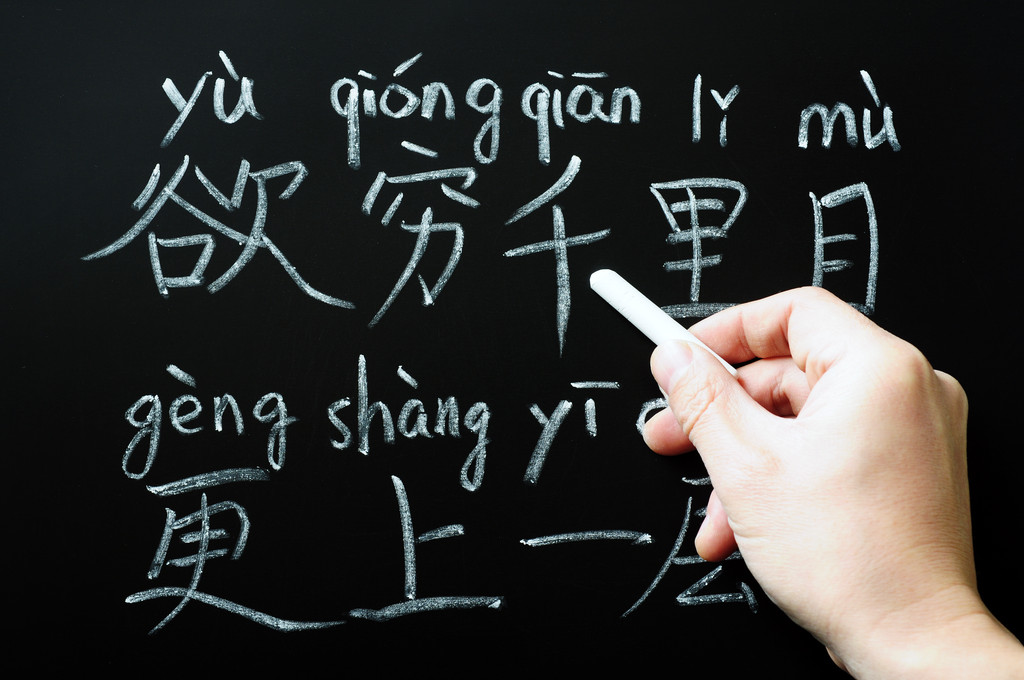PINYIN ?
I heard people mentioning that a lot, but what exactly is it?

[The alphabetic letters above the Chinese characters are the Pinyin]
PINYIN (or Pin Yin) is a unique spelling system developed by Chinese Language Committee at the early 1950’s, with its main aim being to “standardize” the pronunciation of Chinese characters.
Is it relevant to me?
As symbols of a graphic text, Chinese characters may look beautiful and intriguing, but as you can easily imagine, beginning your Chinese learning journey from these "square blocks" could be a huge challenge. To those eyes used to reading alphabetic letters, these characters are more like pieces of little drawings than elements of a written text.
But you've heard that there is another easier way to "read" or "write" Chinese, right? Yes, Pinyin (or Pin-Yin) is what we are talking about.
|
1 |
You may not recognize any of the "words" in the third line, but it surely gives you a sense of "familiarity" or even "readability" to some extent, doesn't it? They are all made of roman alphabets! Some of you may even be trying to read / pronounce these phrases based on your English phonetic habit.
If we managed to learn how to pronounce these Pin Yin properly, we basically learnt how to read the Chinese characters (as long as they have their Pin Yin "equivalents" accompanying them). Most of the text books designed for new Chinese learners come like below. Isn't it a difficult job made easier?
Is Pin Yin difficult to learn?
There are 23 initials and 24 finals, and 16 integral syllables, totaling 60 syllables of sound for you to learn and grasp. To some extent, you may consider the "initials" as "consonant" and the "finals" as "vowels" if that helps you understand their mechanism.
And there is better part: some of them are quite similar to the English, phonetically - or more precisely, very close to those used in the English-based "international phonetic sign" system.
According to many language training schools teaching Chinese to foreign language speakers, a few hours would usually be sufficient for the students to get basic grasp of these 60 Pinyin syllables. The biggest challenges isn't with these syllables - the real daunting task lies with the tones, which we will discuss later.
Is the Purpose of the Pin-Yin system to Help Chinese Learners?
Yes it is. Initially, it was developed to help Chinese people to learn how to read and speak standard Chinese (Mandarin). Now we find that all new Chinese learners, including non-Chinese speaker, can benefit greatly from this spelling system.
At the early 1950's, the then Chinese Language Committee devised this Romanized spelling system with its main aim being to “standardize” the pronunciation of Chinese characters. According to the “Resolution Regarding the Chinese Pinyin Scheme by The National Council” in 1958, the current Pinyin system is “a tool to help learn Chinese characters and promote standard Mandarin accent”.
There are hundreds of dialects spoken in China, and Mandarin is actually one of them picked by the government as the “official standard accent”. How will a Chinese person speaking Sichuanese or Cantonese in their daily life know how to pronounce a character in Mandarin properly? Pinyin will do a perfect job in these situations.
Another benefit of adopting the Pinyin system is that it helped boost the efficiency in fundamental literacy education in China. Pupils in primary schools are given a great tool for them to learn Chinese characters in a much faster and more effective way. Some under-educated peasants, after about 10-20 hours Pinyin trainings, could make use of this writing method to complete their family letters when they forgot how to draw up a few certain difficult characters.

I want to learn Chinese - Do I have to learn Pinyin first?
For foreign language speakers who wish to learn Chinese, Pin-Yin not only serves as a "short-cut" to quickly obtain some basic ability to read or speak Chinese, but also is an essential cornerstone that will build up your absolute foundation for proper and accurate pronunciation of the Chinese lingua franca of Mandarin.
Why do we say that? Because there are some syllables that are unique to Chinese and may not commonly exist in your own native language. Let's check out a few examples:
Chinese: 中国 (China)
Pronunciation: Dzong Gwoh (closest sound)
We usually don't have the "Dz" sound in English, right? This sound is specifically represented by an initial "zh" in Pin-Yin, as it's a very important and frequently used "consonant" in Chinese, and you are going to need it for a great number of characters such as 张, 周, 赵, 制, 主, 者, 这 and many others.
Another example:
Chinese: 上海 (Shanghai)
Pronunciation: Sung Hai (closest sound)
Here I can't really use any English alphabets to precisely present the proper sound, as "S" in the "Sung" needs to be pronounced with a twist of your tongue by curving it up a little bit. This sound is specifically represented by an initial "sh" in Pinyin, and it's also essential for a large number of characters such as 是, 时, 生, 手, 说, 少 and many other words.
Another Example with the finals:
Chinese: 鱼 (fish)
Pronunciation: Youee (closest sound)
Tongue twisted with these "strong" sounds? I am not trying to frustrate you for your ambition to master this new language, but only to let you know that it's really important to begin your linguistic journey with Pin-Yin and lay a solid foundation for proper pronunciation of Chinese Mandarin.
